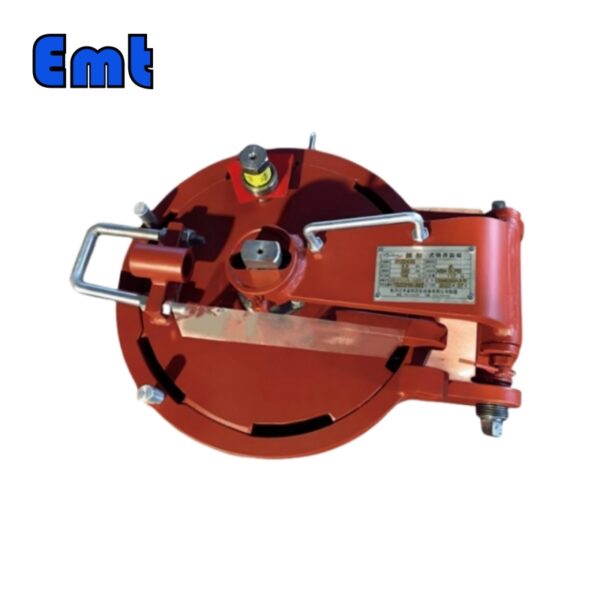Description
Description
Quick Actuating Closures are mechanical devices installed on the round ports of pressure pipes or vessels. They have the ability to open or close rapidly and typically consist of components such as a cylinder flange, head cover, hook ring or clamp, and sealing ring. Additional features may include a safety interlock mechanism, an opening and closing mechanism, a rotating arm, and a short joint if necessary.
Opening the Quick Actuating Closures:
Opening the Closures
- Trained personnel must carefully read the signs on the closures.
- Using the wrong tools can damage the safety chain system, so avoid using hammers.
- Unscrew the upper vent bolt by hand. If you hear sounds or see oil leaks, release the cylinder pressure separately.
- Completely release the pressure before unscrewing the hollow screw by hand.
- A small chain connects the safety plug and hinge.
- Keep unscrewing the bolt until the nut bracket touches the tail bolt.
- Get the slider handle and open the blind flange.
Closing the Quick Actuating Closures:
Closing the Closures
- Properly closing the blind ensures future success.
- Using the wrong tools can damage the safety chain system, so avoid hammers.
- Never use a hammer on the blind plate.
- Carefully clean and lightly lubricate the sealing ring with engine oil. Avoid using thick grease to prevent leaks under low pressure.
- Clean and grease the gasket surface.
- Apply grease to the bolts.
- Close the blind flange and gradually tighten the stud bolts.
- Stop tightening when the nut brackets touch.
- Avoid using a wrench to tighten the bolts.
- Apply oil to the vent bolts and bolt holes.
- Restore the security block.
- Retrieve the handle.
Maintenance of Quick Actuating Closures (EMT):
Lubrication Procedure:
- Every time the Quick Actuating Closure is operated, ensure to lubricate the blind plate.
- Apply lubrication to the hinge shaft.
- Lubricate bolts, nuts, and slide rails.
- Apply lubrication to the vent bolt, including the threads and O-ring.
Seal Replacement:
- Regularly inspect the seal when operating the Quick Actuating Closure. If the seal is loose or damaged, it should be replaced.
- Exercise caution while lubricating with engine oil, paying attention to the seal and the groove in the blind plate.
- Ensure the sealing ring is correctly positioned with the seal groove facing outward. Install the anti-blowout spring behind the washer.
Use of Pigging Indicators:
Before performing pigging operations, verify that the sign plate is reset and the remote transmission device is in good condition.
As the pigging ball passes through, it triggers the trigger plate, causing the signboard to flip from a horizontal to a vertically downward position. Simultaneously, the remote transmission device sends a pass-through signal.
Note: Quick Actuating Closures (EMT) should be properly maintained to ensure optimal performance and safety. Regular lubrication, seal replacement as needed, and attention to pigging indicators contribute to their efficient operation.
Operation Precautions for Quick Actuating Closures:
(1) Ensure all relevant personnel are present and equipped with walkie-talkies to stay in contact with the control room. Have necessary tools like adjustable wrenches ready.
(2) During servicing, carefully monitor valve status and follow procedures precisely to avoid pressure surges or other issues.
(3) Prioritize personal safety by avoiding direct positioning in front of the Quick Actuating Closures on the servicing cylinder.
(4) If the pig remains stuck or outbound pressure rises significantly, promptly inform the dispatching room for further assessment and determine whether to halt operations.
Note: When working with Quick Actuating Closures, adhere to these precautions to maintain safety, communication, and proper procedure execution.









Reviews
There are no reviews yet.